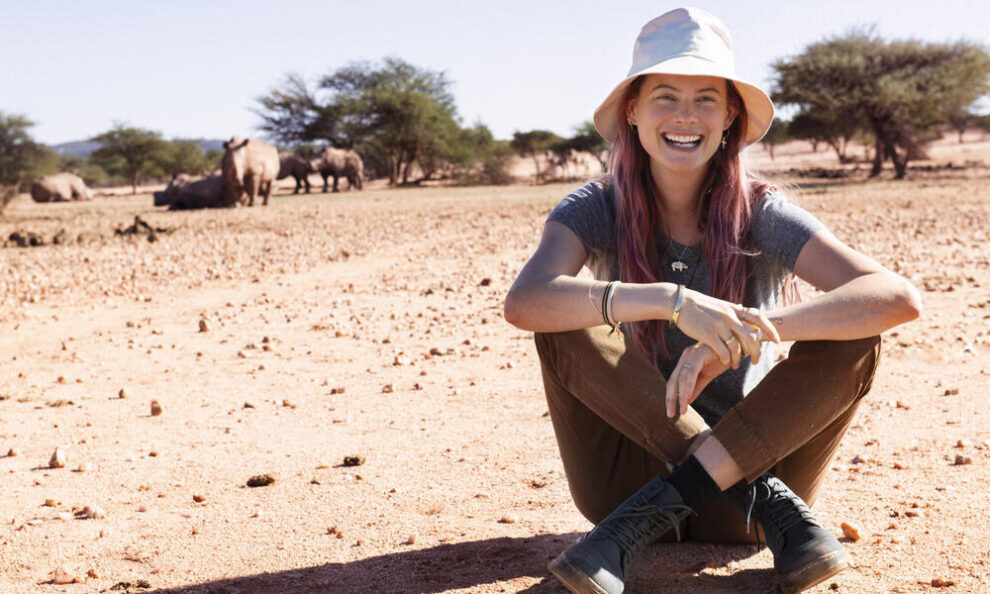Climbing sand dunes as tall as the Empire State Building, running around a meteorite that fell from the sky about 80,000 years ago, and fishing in the ice-cold waters of the Skeleton Coast are just some of the magical moments I had growing up in Namibia.
And then there is Etosha National Park, the most wonderful place of all. When I was a kid, marking days off the calendar until school holidays arrived, I knew that each day took me closer to Etosha. My mom, dad, and I would load the car with food and camping equipment and set out on an adventure to the park!
Banded mongoose scurried across the grounds at Namutoni campsite. A warthog plowed its way through the grass at Okaukuejo, Etosha’s main camp, and there were black rhinos shuffling to the flood-lit waterholes at night. I remember the sounds and the smells and was in awe knowing that this was their home and mine.
I live a world away from Etosha now, but this feeling is still with me. A few years ago, when I was back in Etosha, I found that the park is still magical, and behind the scenes, the Ministry of Environment Forestry and Tourism is working hard to keep it that way.
Namibia is home to the largest population of black rhinos left on earth. The rhinos from Etosha are the donor population for many innovative and successful efforts to expand the range and number of rhinos nationwide. But this success makes Etosha and its rhinos a target for armed poachers and international wildlife crime syndicates that kill them for their horns.
In February of this year, Namibia reported a rhino poaching surge of 93%, mainly in Etosha. With attention focused on the park, the poachers have disappeared into the darkness. But one thing is certain: they will be back, and we must be ready.
As a Nambian, I am incredibly proud to know that Etosha’s K9 protection unit is expanding, the horseback patrols are returning to the park, and that high-tech surveillance equipment is being deployed to monitor areas that have become poaching “hot spots.” Additional resources are also being provided to the Wildlife Protection Services, the skilled team that spends days and nights in the field protecting rhinos. They need to know that we value them as much as we value rhinos.
As we approach World Rhino Day on Sept. 22, please join me in supporting these efforts. WWF is trying to raise $250,000 in support of the Namibian government’s urgent antipoaching plan in Etosha National Park. This includes training a sniffer dog unit to track poachers, building housing for the Wildlife Protection Service, and establishing a horse patrol unit to help rangers monitor the park’s remote areas. We need your help to make it happen.
You can help save rhinos today by making a donation to our emergency antipoaching campaign. One hundred percent of your donation will go directly to fund antipoaching efforts in Namibia, and thanks to an anonymous donor, every dollar will be matched (up to $250,000).
Etosha is still a place of wonder, and with your help, together we can keep it that way.
Souyrce : WORLDWILDLIFE
















